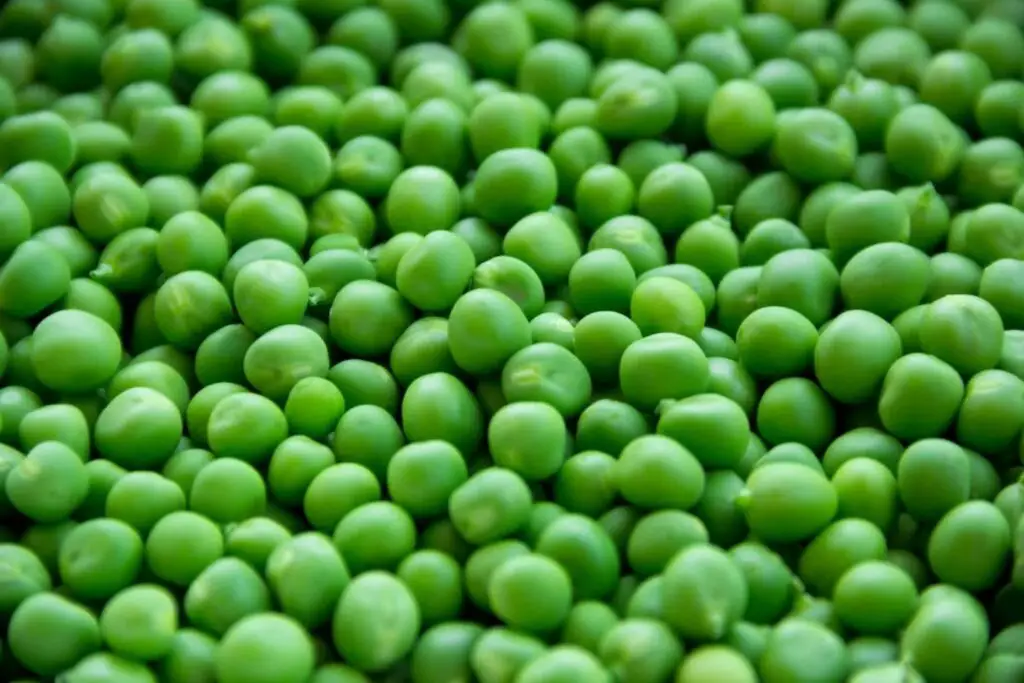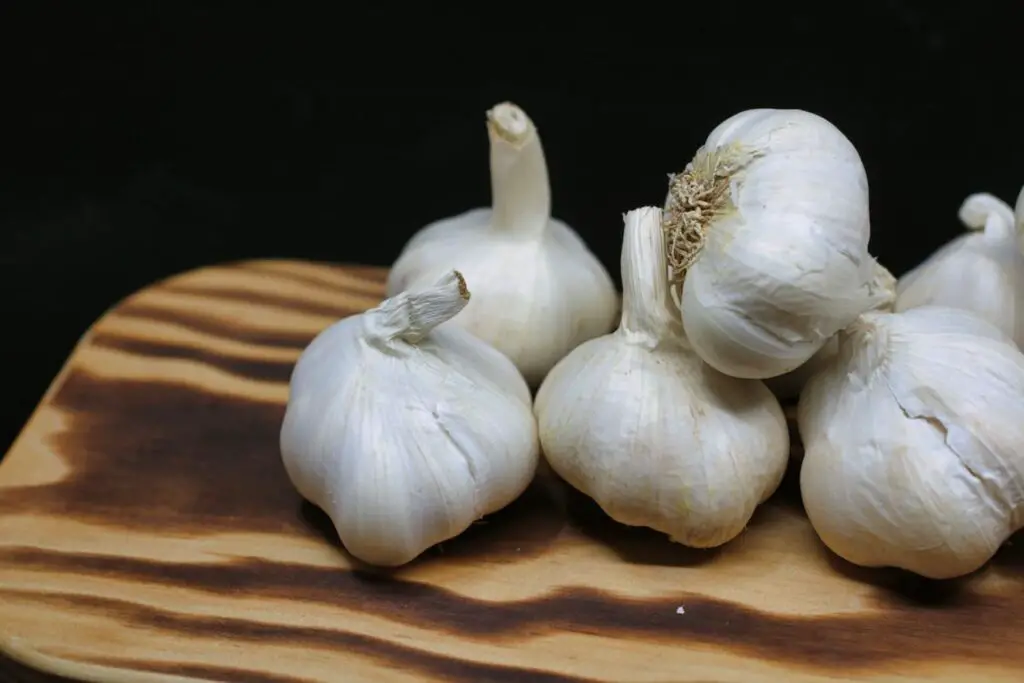
Pepperoncini peppers, with their mild heat and tangy flavor, are a versatile addition to culinary creations that hail from various cuisines. These vibrant yellow-green peppers are known for their ability to add a touch of zing to dishes without overwhelming the palate with spiciness. Whether sliced over salads, stuffed with flavorful fillings, pickled for a delightful condiment, or used to enhance the flavors of sandwiches and Mediterranean dishes, pepperoncini peppers bring a delightful balance of heat and acidity. However, when harvesting or acquiring a surplus of these peppers, it might be challenging to consume them all before they lose their crispness and tang. Freezing pepperoncini peppers presents a practical and effective solution to preserve their tangy taste and vibrant texture, ensuring that each pepper retains its zesty essence and culinary versatility, ready to elevate your meals with the essence of perfectly frozen pepperoncini peppers, even when fresh peppers are not readily available or when you crave a burst of flavor at your convenience. In this guide, we will delve into the best practices for freezing pepperoncini peppers, allowing you to savor the richness of these tangy delights and enhance your culinary creations with the essence of perfectly frozen peppers, without the need for frequent trips to the market or concerns about preserving their quality. Prepare to embrace the versatile charm of pepperoncini peppers, with a freezer stocked with these zesty bursts of flavor that await to add a touch of culinary delight to your dishes year-round.
Here are the simple steps to freeze pepperoncini peppers:
- Step 1: Choose Fresh Pepperoncini Peppers
- Step 2: Clean and Trim the Peppers
- Step 3: Blanch the Pepperoncini Peppers
- Step 4: Drain and Dry the Peppers
- Step 5: Arrange the Peppers for Freezing
- Step 6: Flash-Freeze the Pepperoncini Peppers
- Step 7: Package and Seal the Peppers
- Step 8: Label and Date the Packages
- Step 9: Store in the Freezer
Step 1: Choose Fresh Pepperoncini Peppers
Selecting the right pepperoncini peppers is crucial for successful freezing and preserving their flavor and quality. The freshness of the peppers at this stage will significantly impact the end result after freezing.
Why is this step important?
Freshness plays a vital role in maintaining the taste, texture, and overall appeal of frozen pepperoncini peppers. Peppers that are past their prime or showing signs of spoilage will not freeze well and can result in a disappointing culinary experience. Choosing vibrant and firm pepperoncini peppers ensures that they are at their peak and will retain their characteristic mild heat and tangy flavor even after freezing.
How to do it:
- Visual Inspection: Examine the pepperoncini peppers closely. They should have a vibrant color that corresponds to their variety (typically a bright green or yellow hue). Avoid peppers with dull or faded colors, as this can indicate aging.
- Texture Check: Gently squeeze the peppers to assess their firmness. Fresh pepperoncini peppers should feel firm and taut, indicating their crispness. If a pepper feels soft or wrinkled, it may be overripe and won’t freeze well.
- Signs of Spoilage: Look for any signs of mold, discoloration, or blemishes on the peppers’ skin. These can indicate the presence of spoilage, and peppers with such marks should be discarded.
- Stem Condition: Examine the stems of the pepperoncini peppers. Fresh peppers will have sturdy, green stems. If the stems are brown, shriveled, or appear dry, the peppers might be past their prime.
Step 2: Clean and Trim the Peppers
After choosing the freshest pepperoncini peppers, it’s important to properly clean and prepare them for the freezing process. Cleaning and trimming the peppers not only removes any potential contaminants but also ensures that they are ready for blanching and freezing.
Why is this step important?
Cleaning and trimming the peppers serve multiple purposes. Washing the peppers eliminates dirt, bacteria, and any residues that might be present on the surface. Trimming the stems is essential because frozen stems can become tough and undesirable when cooked later. By taking these measures, you prepare the peppers for blanching, which is a crucial step in preserving their flavor, color, and texture during freezing.
How to do it:
- Washing: Place the pepperoncini peppers under cold running water. Gently rub each pepper with your fingers to remove any dirt or debris. This process helps ensure that no unwanted particles are left on the peppers’ surface.
- Patting Dry: After washing, use a clean kitchen towel or paper towels to gently pat the pepperoncini peppers dry. Removing excess moisture is important because it prevents ice crystals from forming during freezing.
- Trimming Stems: Carefully cut off the stems of the pepperoncini peppers using a sharp knife. The stem end can become tough after freezing and may not contribute positively to the peppers’ texture when used in dishes later.
Step 3: Blanch the Pepperoncini Peppers
Blanching is a crucial step in the process of freezing pepperoncini peppers. This technique involves briefly immersing the peppers in boiling water and then rapidly cooling them in ice water. Blanching serves to preserve the peppers’ vibrant color, distinct flavor, and desirable texture, all of which can deteriorate over time if not properly treated before freezing.
Why is this step important?
Blanching serves multiple purposes in the freezing process. It helps to deactivate enzymes that can cause loss of color, flavor, and texture in peppers during freezing. Additionally, blanching helps to cleanse the peppers, removing any remaining surface contaminants. Rapidly cooling the peppers after blanching halts the cooking process and helps lock in their freshness and qualities for prolonged storage.
How to do it:
- Boil Water: Bring a pot of water to a rolling boil. The pot should be large enough to comfortably accommodate the pepperoncini peppers without overcrowding.
- Prepare Ice Water Bath: While the water is boiling, prepare a bowl of ice water. This will be used to quickly cool the peppers after blanching and stop the cooking process.
- Blanch the Peppers: Carefully place the cleaned and trimmed pepperoncini peppers into the boiling water. Allow them to blanch for about 1-2 minutes. The exact timing can vary slightly depending on the size and thickness of the peppers.
- Transfer to Ice Water: Using a slotted spoon or tongs, immediately transfer the blanched peppers to the bowl of ice water. This rapid cooling halts the cooking process and helps the peppers retain their color and crispness.
- Drain and Dry: After the peppers have cooled in the ice water for a couple of minutes, remove them and place them on a clean kitchen towel to drain excess moisture.
Step 4: Drain and Dry the Peppers
After blanching and cooling the pepperoncini peppers, it’s essential to ensure that they are free from excess moisture before proceeding with the freezing process. Properly draining and drying the peppers help prevent the formation of ice crystals, which can negatively impact their texture and overall quality during freezing and storage.
Why is this step important?
Excess moisture can lead to the formation of ice crystals when the peppers are frozen, which can result in a loss of texture and flavor. By draining and drying the peppers, you reduce the likelihood of freezer burn and maintain the peppers’ integrity throughout their time in the freezer.
How to do it:
- Remove from Ice Water: Take the pepperoncini peppers out of the ice water bath after they have cooled. Place them on a clean kitchen towel or a layer of paper towels.
- Drain: Allow the peppers to drain for a few moments on the towel. This step allows any remaining water droplets on the surface to be released.
- Pat Dry: Gently pat the peppers dry using another clean paper towel. Be careful not to press too hard, as you want to remove moisture without damaging the peppers.
- Inspect for Moisture: Check the peppers for any signs of moisture. Make sure there are no lingering water droplets on the surface.
Step 5: Arrange the Peppers for Freezing
Once you’ve prepared the pepperoncini peppers by blanching, cooling, draining, and drying them, the next step is to arrange them in a way that promotes effective freezing. Properly arranging the peppers on a baking sheet ensures that they freeze individually and won’t stick together, making it easier to portion them out when needed.
Why is this step important?
Arranging the pepperoncini peppers in a single layer on a baking sheet before freezing prevents them from clumping together. If the peppers freeze in contact with each other, they can become difficult to separate later on, leading to uneven thawing and potential loss of texture.
How to do it:
- Prepare a Baking Sheet: Take a clean, dry baking sheet and line it with parchment paper or a silicone baking mat. This prevents the peppers from sticking to the sheet.
- Single Layer: Lay the blanched and dried pepperoncini peppers on the baking sheet in a single layer. Make sure they are not touching each other. This spacing ensures that each pepper freezes individually.
- Even Distribution: Distribute the peppers evenly across the baking sheet. If necessary, use multiple baking sheets to avoid overcrowding, which can lead to uneven freezing.
- Freezer Space: Once the peppers are arranged, place the baking sheet in the freezer. Allow the peppers to freeze until they are firm, which usually takes a few hours.
Step 6: Flash-Freeze the Pepperoncini Peppers
Flash-freezing is a technique that involves quickly freezing food items at a very low temperature. In this step, you’ll place the arranged pepperoncini peppers on a baking sheet in the freezer. Flash-freezing helps preserve the individual integrity of each pepper, preventing them from sticking together and facilitating portioning when you’re ready to use them.
Why is this step important?
Flash-freezing serves two key purposes. Firstly, it ensures that the peppers freeze quickly, which reduces the formation of large ice crystals. Smaller ice crystals are less likely to damage the cellular structure of the peppers, resulting in better texture and flavor upon thawing. Secondly, flash-freezing prevents the peppers from clumping together, enabling you to remove just the desired amount from the freezer without thawing the entire batch.
How to do it:
- Place in Freezer: Once the pepperoncini peppers are arranged in a single layer on the baking sheet, place the sheet in the freezer. Position the sheet so that it lays flat and is not tilted.
- Freeze Until Firm: Allow the pepperoncini peppers to freeze for a few hours, or until they are firm to the touch. The exact freezing time can vary based on the size of the peppers and the efficiency of your freezer.
- Check for Firmness: After the specified time has passed, check the firmness of the peppers. If they feel solid and frozen.
By flash-freezing the pepperoncini peppers, you’re ensuring that they freeze quickly and uniformly. This process maintains the peppers’ quality and individual structure, making it convenient for you to use just the amount you need without having to thaw and separate a clump of frozen peppers.
Step 7: Package and Seal the Peppers
After flash-freezing the pepperoncini peppers, it’s time to properly package and seal them for long-term storage in the freezer. Effective packaging plays a critical role in preventing freezer burn, which can compromise the quality and flavor of frozen food over time.
Why is this step important?
Proper packaging is essential to maintain the quality and flavor of frozen pepperoncini peppers. Freezer burn occurs when moisture in the food evaporates and then re-condenses on its surface, leading to the formation of ice crystals and the development of off-flavors. By using airtight packaging and removing excess air, you can significantly reduce the risk of freezer burn.
How to do it:
- Choose Packaging: Opt for high-quality airtight freezer bags or freezer-safe containers. These are designed to keep out air and moisture, helping preserve the quality of the peppers.
- Transfer Peppers: Carefully transfer the flash-frozen pepperoncini peppers from the baking sheet into the chosen packaging. Be sure to work quickly to prevent the peppers from thawing.
- Squeeze Out Air: As you seal the packaging, press gently to remove as much air as possible from the bags or containers. Excess air can lead to freezer burn and deterioration of the peppers.
- Seal Securely: Close the freezer bags or containers securely, following the manufacturer’s instructions. If using bags, consider double-sealing by folding over the top and then sealing a second time.
Step 8: Label and Date the Packages
After properly packaging the flash-frozen pepperoncini peppers, it’s important to take an extra step to label and date the packages. This simple yet crucial step helps you keep track of when the peppers were frozen, allowing you to use them within their optimal storage timeframe.
Why is this step important?
Labeling and dating the packages serve as a reminder of when the peppers were frozen. Over time, frozen foods can degrade in quality due to factors such as freezer burn or flavor changes. By knowing the freezing date, you can ensure that you use the peppers within a reasonable timeframe to enjoy them at their best.
How to do it:
- Choose a Permanent Marker: Select a permanent marker that won’t smudge or fade over time. Dark-colored markers are usually best for clear bags or containers.
- Label with the Date: Write the current date on the freezer bags or containers. You can write directly on the packaging, making sure the date is clear and easy to read.
- Include Specifics: If you’d like, you can also include additional information, such as the type of peppers or any other relevant details.
- Place in a Visible Area: Make sure the label is easily visible, so you can quickly identify when the peppers were frozen without having to rummage through the freezer.
- Be Consistent: Use the same labeling method for all packages to create a consistent system for tracking freezing dates.
Step 9: Store in the Freezer
After taking all the necessary steps to prepare and package your flash-frozen pepperoncini peppers, the final step is to place them in the freezer for long-term storage. Proper storage conditions ensure that the peppers remain in good quality and are readily available whenever you need them.
Why is this step important?
Storing the frozen pepperoncini peppers correctly is crucial to maintaining their texture, flavor, and overall quality. Freezer burn, texture changes, and flavor deterioration can occur if the peppers are not stored in an appropriate manner.
How to do it:
- Choose a Storage Location: Select a spot in your freezer where the packages of pepperoncini peppers won’t be easily crushed or damaged. Avoid placing them near the front of the freezer where they might be exposed to temperature fluctuations when the door is opened frequently.
- Stacking: If you need to stack multiple packages, do so carefully. Place heavier items at the bottom and avoid overloading the stack to prevent crushing.
- Keep Labels Visible: Ensure that the labeled sides of the packages are facing outward or are easily visible. This makes it easier to quickly identify the peppers and their freezing date.
- Avoid Overcrowding: Allow enough space around the packages to promote proper air circulation within the freezer. This helps maintain consistent temperatures and prevents uneven freezing.
- Keep Freezer Closed: Be mindful of not keeping the freezer door open for extended periods, as this can lead to temperature fluctuations that affect the quality of the frozen peppers.
How long pepperoncini peppers can last in the freezer?
Pepperoncini peppers can last in the freezer for about 8 to 12 months. Properly packaged and stored at 0°F (-18°C) or below, they maintain optimal flavor and quality within this timeframe. Extended storage can lead to diminished taste and texture.
Other related questions
How do you defrost pepperoncini peppers?
To defrost pepperoncini peppers, place the sealed package in the refrigerator for several hours or overnight. Alternatively, use the defrost setting on a microwave, using short intervals and checking regularly. Avoid defrosting at room temperature to ensure safety and maintain quality.
Can you refreeze pepperoncini peppers?
Refreezing pepperoncini peppers is not recommended. Once thawed, their quality deteriorates due to moisture loss and potential bacterial growth. To maintain taste and safety, use them promptly after thawing and avoid refreezing.
How do I know if the pepperoncini peppers have gone bad after being frozen?
Inspect pepperoncini peppers for signs of freezer burn, ice crystals, or changes in color and texture. Off-putting odors or flavors suggest deterioration. If unsure, trust your senses and discard peppers that exhibit any abnormalities post-thawing.
Can I freeze pepperoncini pepper brine for pickling liquid?
Yes, you can freeze pepperoncini pepper brine for pickling liquid. It can be stored in airtight containers, leaving some space for expansion. Thaw in the refrigerator when needed; its flavor and tanginess should remain intact after freezing.
Can you freeze pepperoncini peppers in oil or vinegar?
Freezing pepperoncini peppers in oil or vinegar is possible, but precautions are necessary. Acidic liquids like vinegar can become cloudy after freezing. Store in airtight containers, allowing space for expansion; thaw in the refrigerator to retain flavor and texture.
Can I freeze pepperoncini peppers with other types of peppers?
Yes, freezing pepperoncini peppers with other types is feasible. Ensure similar freezing requirements and compatible flavors. Pre-slice or chop, then portion and freeze separately or as mixes for convenient use in recipes.
Can you freeze roasted or grilled pepperoncini peppers?
Yes, you can freeze roasted or grilled pepperoncini peppers. Cool them before freezing to avoid condensation. Pack in airtight containers or freezer bags, removing excess air, for optimal flavor and texture upon thawing.








